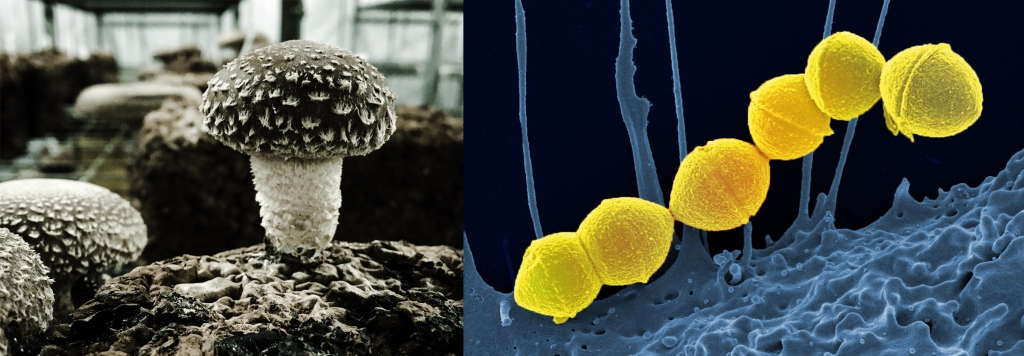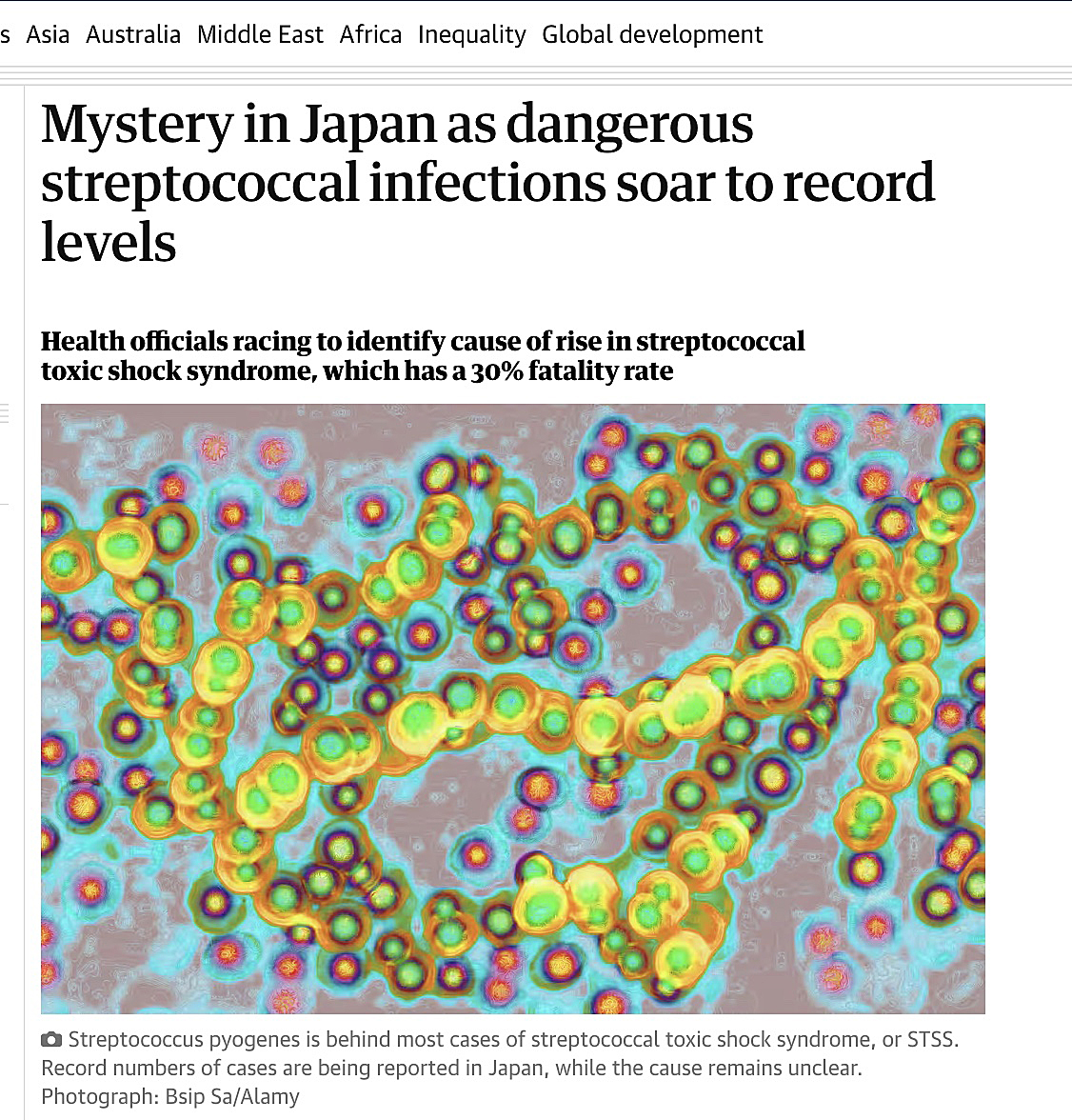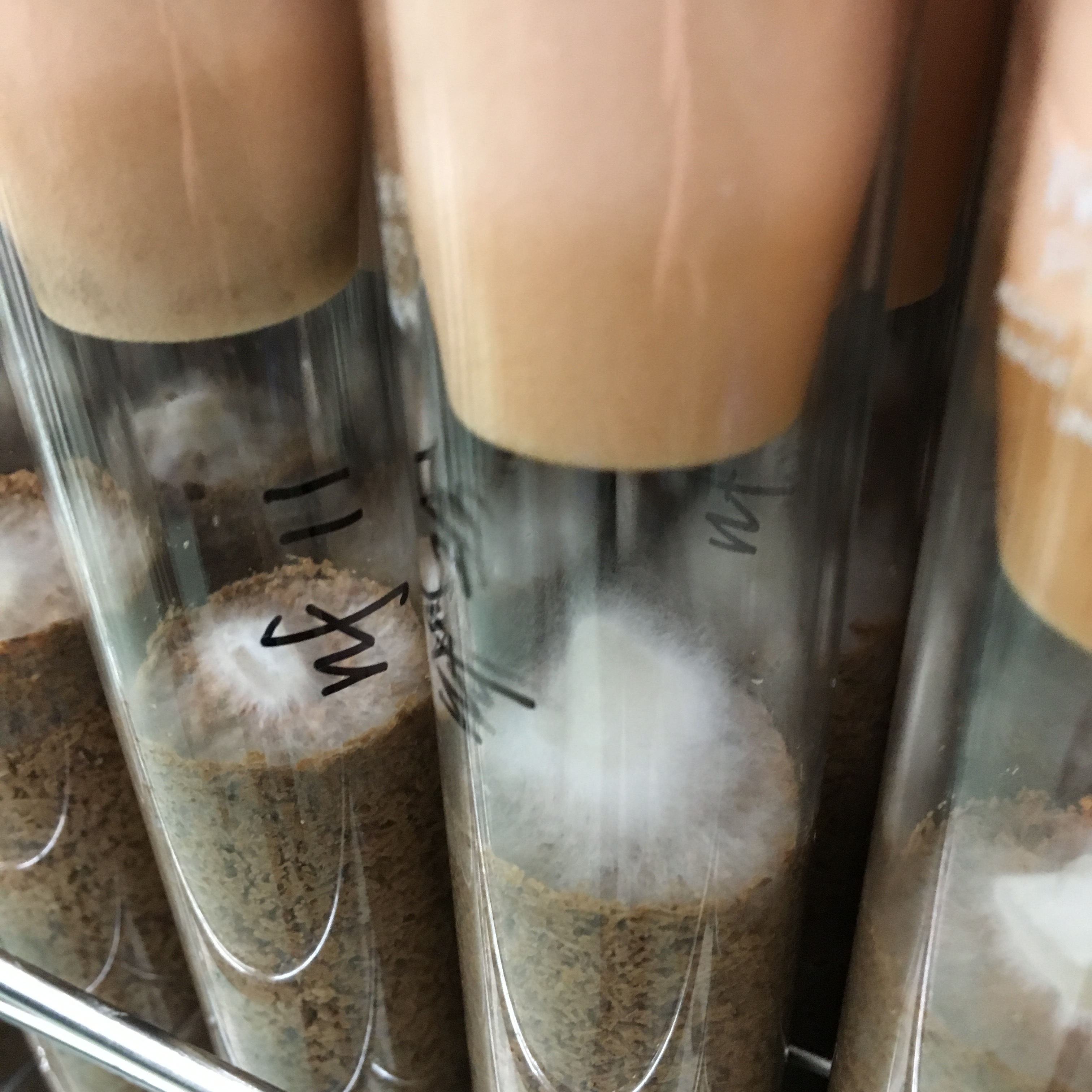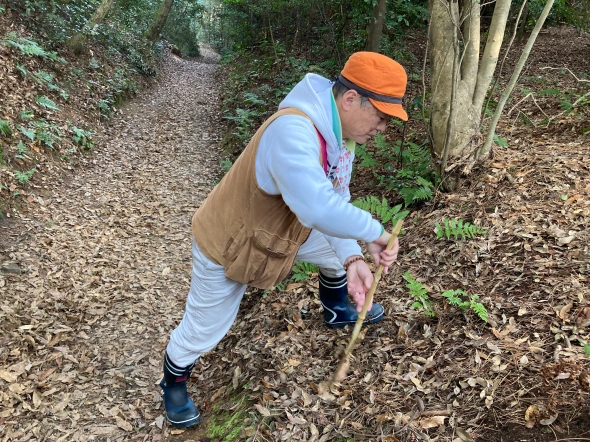Shiitake vs Streptococcus pyogenes

Japanese follows below. 日本語は英文下に。
The highly contagious bacteria that cause the infection can, in some cases, cause serious illnesses, health complications and death, particularly in adults over 30. About 30% of STSS cases are fatal

“Experts warn that a rare but dangerous bacterial infection is spreading at a record rate in Japan, with officials struggling to identify the cause.
The number of cases in 2024 is expected to exceed last year’s record numbers, while concern is growing that the harshest and potentially deadly form of group A streptococcal disease – streptococcal toxic shock syndrome (STSS) – will continue to spread, after the presence of highly virulent and infectious strains were confirmed in Japan” – J. McCurry, Mystery in Japan as dangerous streptococcal infections soar to record levels, The Guardian (2024). https://www.theguardian.com/world/2024/mar/15/japan-streptococcal-infections-rise-details.
This form of Strep A is a nasty one. In his Guardian article (June 15th, 2024) Justin writes:
“Most cases of STSS are caused by a bacterium called streptococcus pyogenes. More commonly known as strep A – it can cause sore throats, mainly in children, and lots of people have it without knowing it and do not become ill. But the highly contagious bacteria that cause the infection can, in some cases, cause serious illnesses, health complications and death, particularly in adults over 30. About 30% of STSS cases are fatal”.
Across the globe, as drug-resistant pathogenic microorganisms proliferate, medicinal mushrooms (MMs) are being researched as never before as weapons in the fight against disease. In in vitro testing, a component derived from the edible shiitake mushroom has shown antimicrobial effectiveness against Streptococcus pyogenes to a degree that matches antimicrobial drugs.
A 2001 paper from Hungary suggests the effetive substance is likely lenthionine. “The mycelium-free culture fluid [derived from Lentinus edodes, Shiitake] was bacteriostatic against Streptococcus pyogenes, Staphylococcus aureus and Bacillus megaterium. The substance responsible for the activity was heat-stable, could be extracted with chloroform and had a molecular weight under 10000. These characteristics suggested that the component might be lenthionine, an antibacterial and anti-fungal sulphur-containing compound”.
@medicinalmushroom, @fungi, @Japan, antibiotic-resistance, Health, medicinal mushrooms, Mushroom, mushroomsThe paper then reassuringly adds “The culture fluid was less toxic to human tissue culture cells than to microbes.”
The following, from research conducted in Ireland in 2009, indicates the humble shiitake’s usefulness in a number of antimicrobial applications: “Several batches of Shiitake and oyster mushrooms were purchased fresh from a local supermarket and underwent aqueous extraction of potential antimicrobial components. After reconstitution, aqueous extracts were tested qualitatively against a panel of 29 bacterial and 10 fungal pathogens, for the demonstration of microbial inhibition. Results: Our data quantitatively showed that Shiitake mushroom extract had extensive antimicrobial activity against 85% of the organisms it was tested on, including 50% of the yeast and mould species in the trial. This compared favourably with the results from both the Positive control (Ciprofloxacin).”
J. R. Rao, B. C. Millar, J. E. Moore, Antimicrobial properties of shiitake mushrooms (Lentinula edodes). International Journal of Antimicrobial Agents 33, 591–592 (2009).
Shiitake offer other health benefits too. Lentinan is a polysaccharide extracted from Shiitake. β-Glucan is its major bioactive component, and has proven immunostimulatory effect. Its antitumor properties were recorded in the 1960s and it has been approved as an adjuvant therapeutic drug in China and Japan for treating cancers since 1980s. However, globally more often than not products derived from MMs – shiitake included – are marketed as ‘dietary supplements’.

Read more about its likely anti-tumor, cholesterol-lowering, immunostimulant, antiviral and antibacterial properties at the excellent, ever erring-on-the-side-of-caution, Memorial Sloan Kettering Cancer Center’s About Herbs site.
I’m lucky enough to live in Japan where there is a cheap and plentiful supply of Shiitake. I will make a decoction – aka, aqueous extract/fabulous dashi – and a tincture soon, and post more info here in case you’d like to try it yourself.
シイタケ対化膿レンサ球菌
希少だが危険な細菌感染症が日本で記録的な勢いで蔓延していると専門家が警告しています。 A群溶血性レンサ球菌感染症の中でも最も過酷で死に至る可能性のある「溶連菌中毒性ショック症候群(STSS)」が日本で確認されたことで、2024年の患者数は昨年の記録数を上回ると予想されています。
このA型溶連菌は厄介なものです。ジャスティンはガーディアンの記事(2024年6月15日)でこう書いています:
「STSSのほとんどは、化膿レンサ球菌と呼ばれる細菌によって引き起こされます。一般的には溶連菌Aとして知られているこの細菌は、主に子供たちの咽頭炎を引き起こします。しかし、この感染症の原因となる感染力の強い細菌は、特に30歳以上の成人では、場合によっては重篤な病気や健康合併症、死亡を引き起こすことがあります。STSSの約30%は死に至ります」。J. McCurry, Mystery in Japan as dangerous streptococcal infections soar to record levels, The Guardian (2024). https://www.theguardian.com/world/2024/mar/15/japan-streptococcal-infections-rise-details.

世界中で薬剤耐性の病原性微生物が増殖する中、薬用キノコ(MM)は病気と闘うための武器として、かつてないほど研究が進められています。化膿連鎖球菌の場合、実験室でのテストでは、地味なシイタケ由来の成分が抗菌効果を示しました。
以下は、2009年にアイルランドで行われた研究によるもので、地味なシイタケが多くの抗菌用途に有用であることを示しています:
2001年にハンガリーで発表された論文によると、これはレンチオニンかもしれません。「菌糸体を含まない培養液(Lentinus edodes, Shiitake由来)」は、Streptococcus pyogenes、Staphylococcus aureus、Bacillus megateriumに対して静菌性を示しました。活性の原因物質は熱に強く、クロロホルムで抽出でき、分子量は10000以下でした。これらの特徴から、この成分は抗菌・抗真菌性の含硫化合物であるレンチオニンである可能性が示唆されました」。
そして、この論文は、”培養液は、微生物よりもヒト組織培養細胞に対する毒性が低かった “と付け加えています。
地元のスーパーマーケットから新鮮なシイタケとヒラタケを数バッチ購入し、内在する抗菌成分を水抽出しました。再構成後、水性抽出物を29種類の細菌および10種類の真菌病原体パネルに対して定性試験を行い、微生物阻害を実証しました。その結果、シイタケ抽出物は、試験対象となった酵母およびカビ種の50%を含む85%の生物に対して、広範な抗菌活性を有することが定量的に示されました。これは、陽性対照(シプロフロキサシン)の結果と比較すると、良好な結果でした。J. R. Rao, B. C. Millar, J. E. Moore, Antimicrobial properties of shiitake mushrooms (Lentinula edodes). International Journal of Antimicrobial Agents 33, 591–592 (2009).
シイタケには他にも健康効果があります。レンチナンはシイタケから抽出される多糖類です。β-グルカンはその主要な生理活性成分で、免疫賦活作用が証明されています。その抗腫瘍作用は1960年代に記録され、1980年代以降、中国や日本ではがんの補助治療薬として承認されています。しかし、世界的には、シイタケを含むMM由来の製品は、「栄養補助食品」として販売されることが多くなっています。 抗腫瘍作用、コレステロール低下作用、免疫賦活作用、抗ウイルス作用、抗菌作用については、メモリアル・スローン・ケタリングがんセンターの「ハーブについて」のサイトをご覧ください。
私は幸運にも日本に住んでいて、安くて豊富なシイタケが手に入ります。近々、煎じ薬とチンキを作る予定です。@medicinalmushrooms @fungi @Japan @fungiJapan




